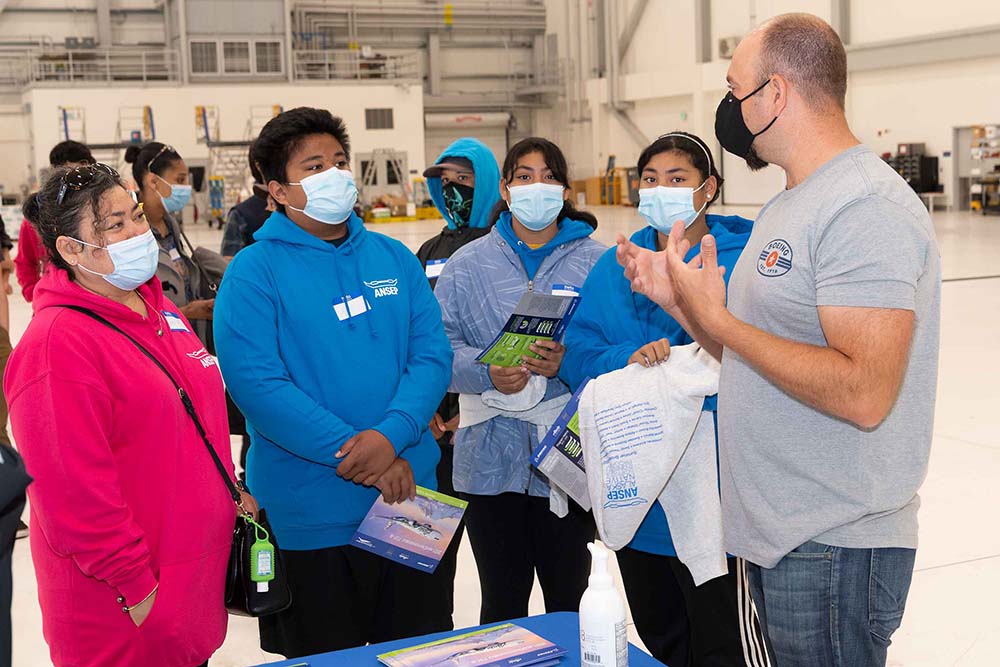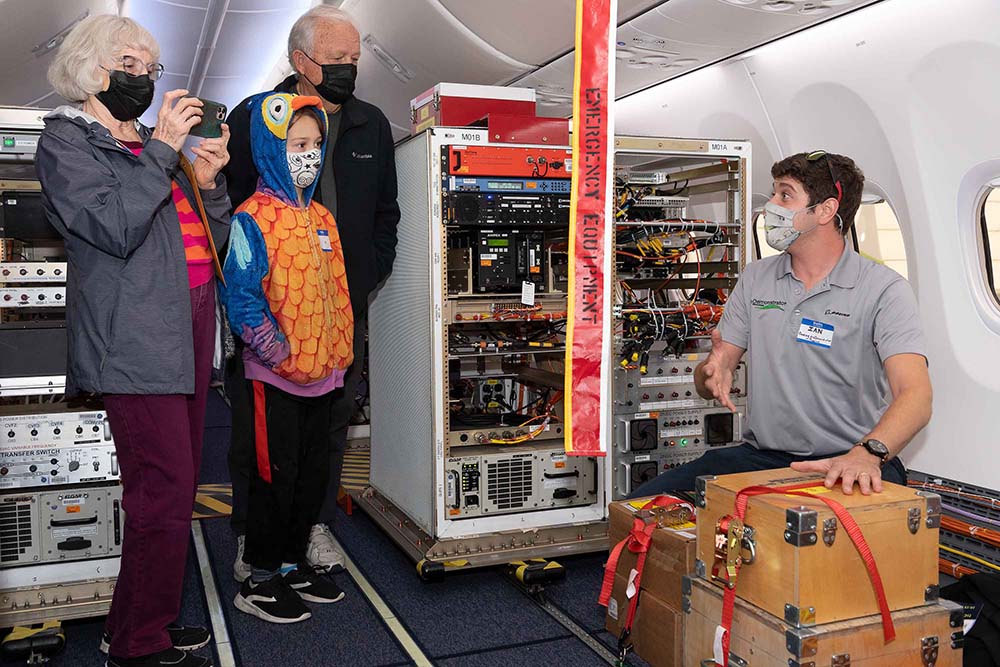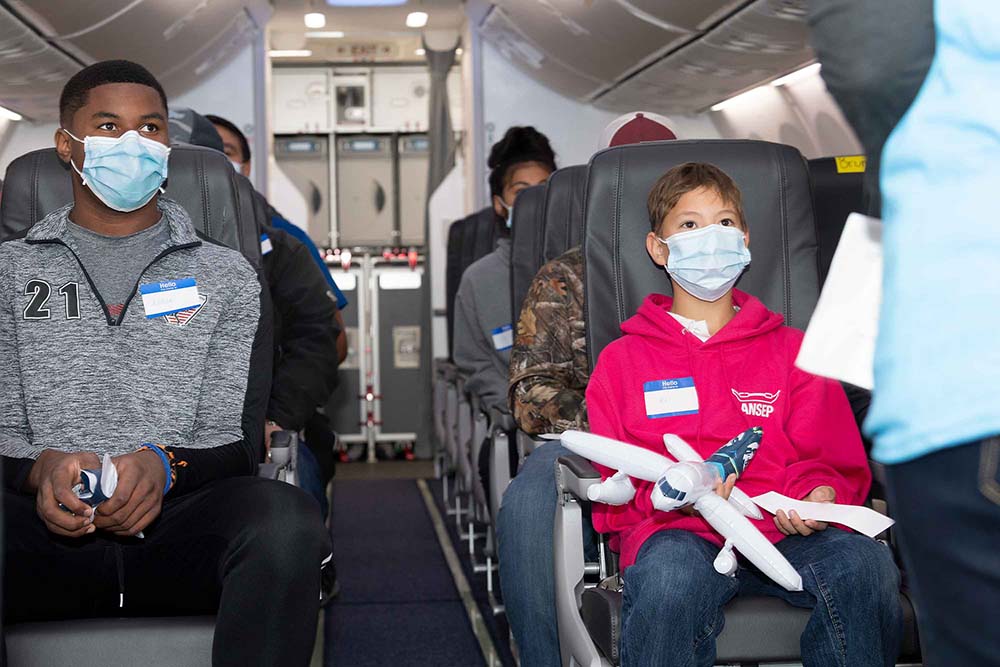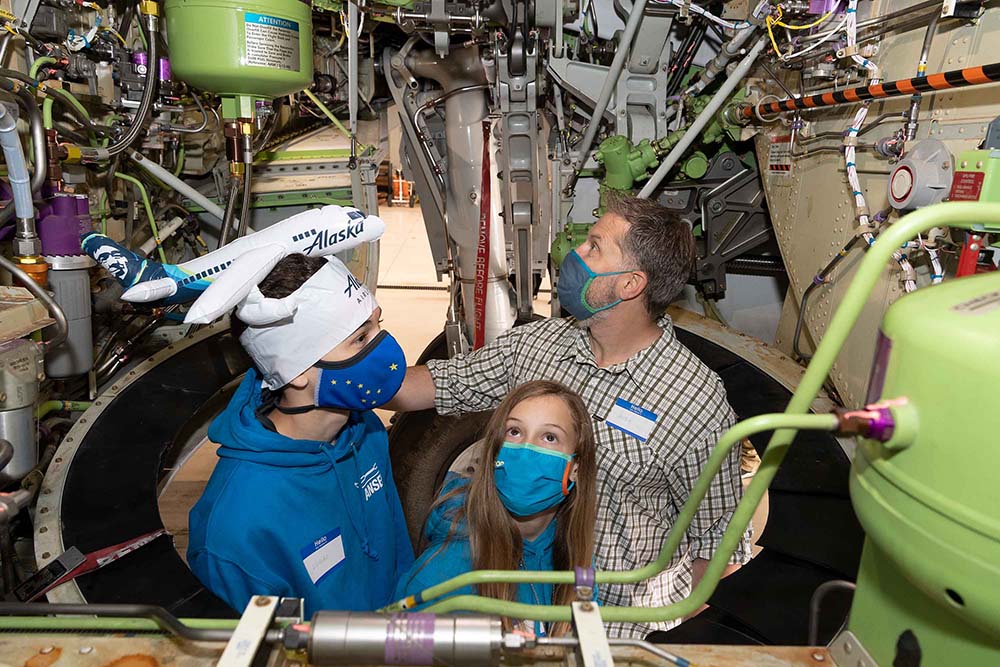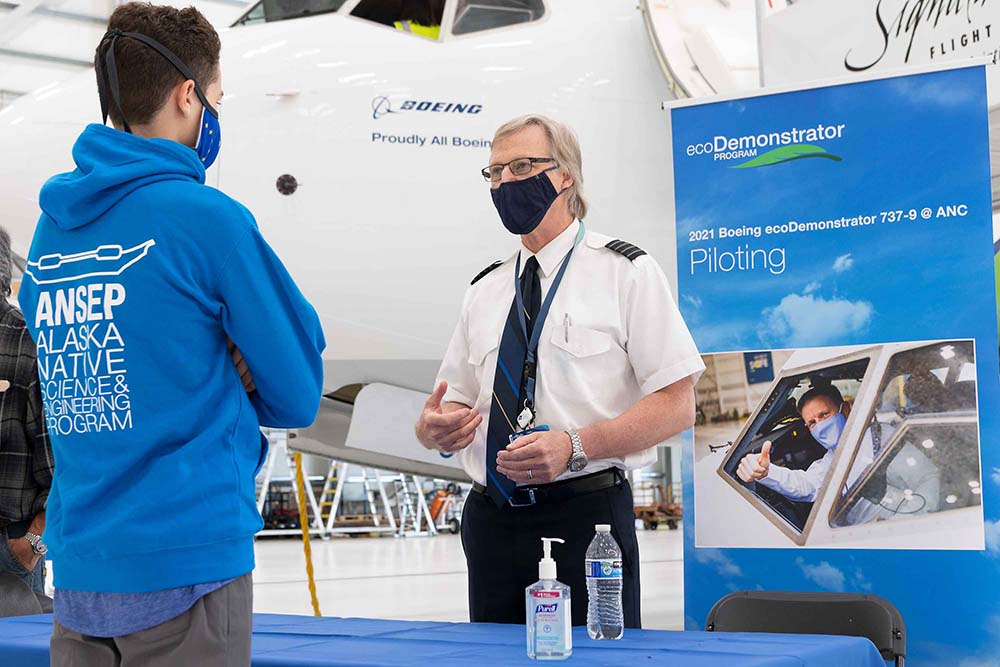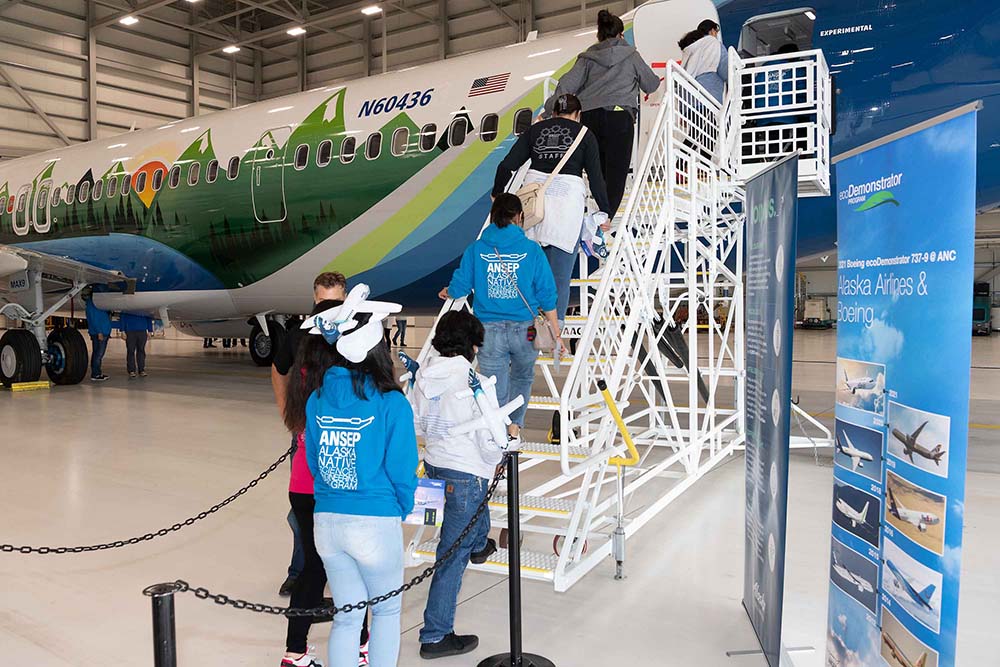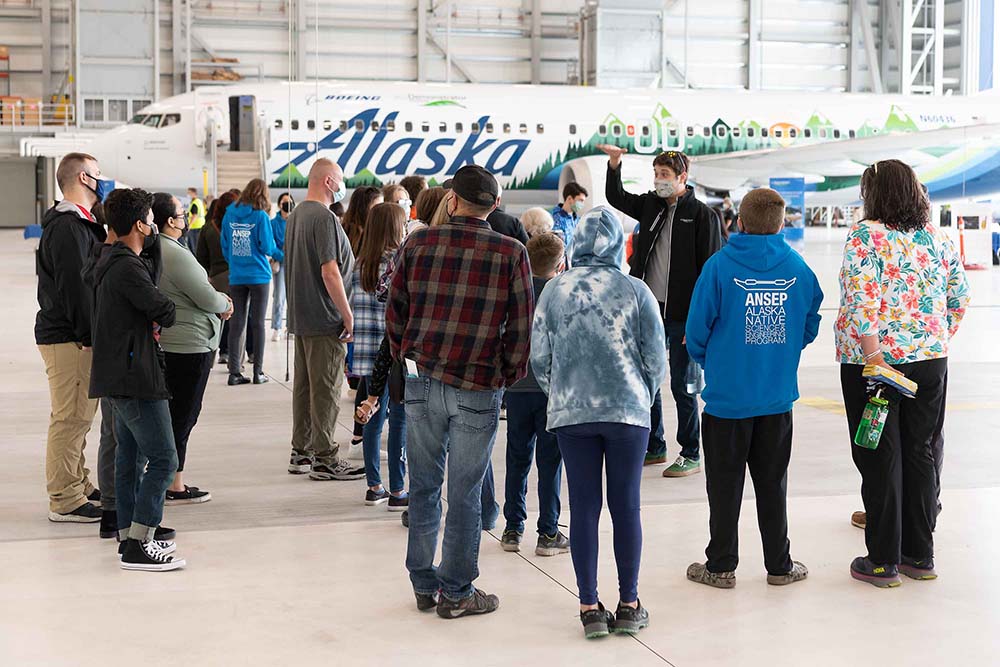Boeing and Alaska test technology to make flying safer and greener
Share
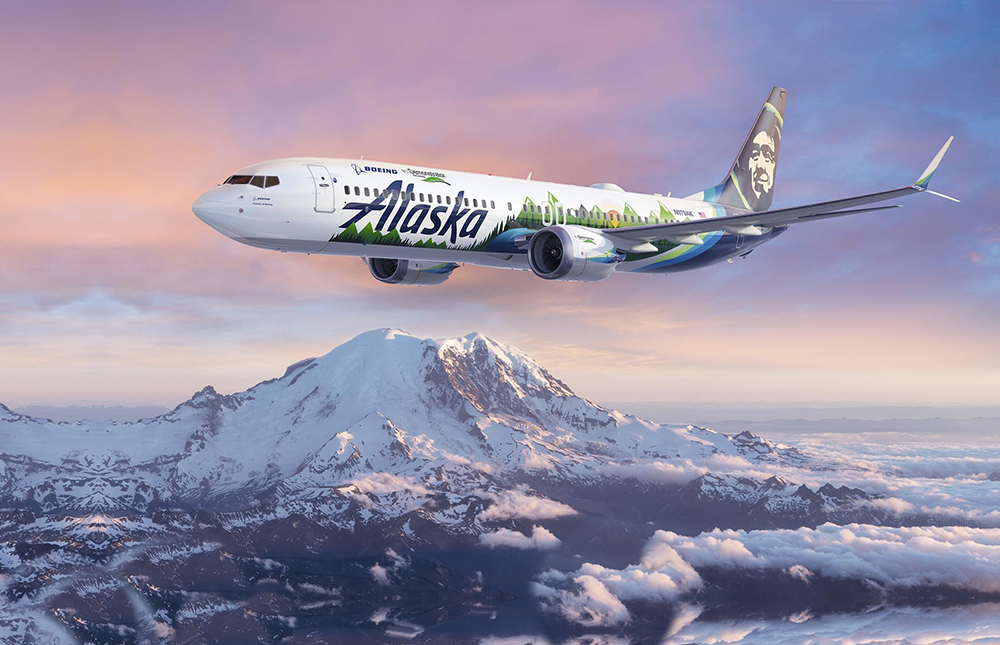
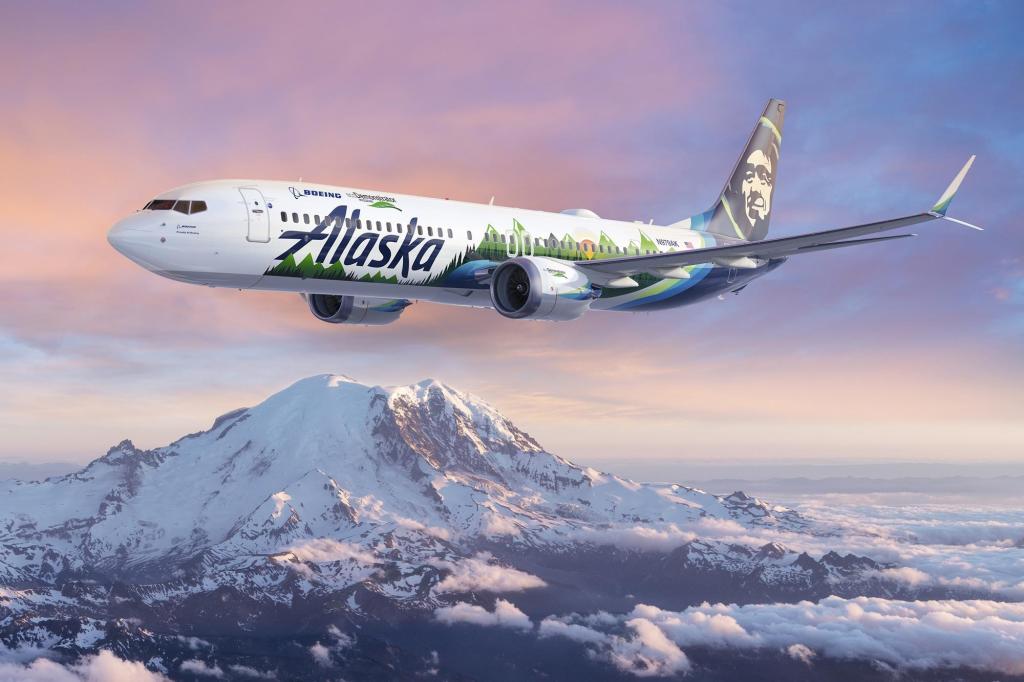
This month, 250 students stopped by our Anchorage hangar to explore the latest technology Boeing and Alaska are testing to make aviation safer and more eco-friendly.
Planemakers like Boeing must test absolutely every thing on a plane before guests ever step on board. The students, part of Alaska’s Native Science and Engineering Program (ANSEP), learned all about our industry and Boeing’s latest developments that will help us reach net zero carbon emissions by 2040.
In its eighth iteration, Boeing and its partners, including the National Oceanic and Atmospheric Administration (NOAA), using one of our 737-9 aircraft before it is delivered to us in early 2022. Test flights began in late June, flying around the Pacific Northwest, Alaska, California and Montana to test out various technologies.
What’s the newest tech?
Low-profile anti-collision light – an aircraft body needs to be as streamlined as possible – anything sticking out creates drag and reduces efficiency. Anti-collision lights currently are located on the top and bottom of the fuselage and stick out so they can be easily seen.
A low-profile light is being tested with a new lens so the light doesn’t stick out as far but can still be easily seen. This design also moves the electronics from outside to inside the aircraft, improving the light’s reliability.
Recycled Carbon Fiber Sidewalls – Boeing is testing replacing conventional cabin wall insulation with composite waste material from the construction of a Boeing 777X wing to make sidewalls stronger and lighter. The panels will be tested to ensure they’re as quiet as the ones in service today.
NOAA Greenhouse Gas Measurement – NOAA uses data from commercial airplanes – such as wind and temperature – to improve climate modeling and long-term forecasting.
For better long-term climate modeling, they need to measure the concentrations of existing greenhouse gases (carbon dioxide, carbon monoxide, methane, water vapor). Our airplane is helping NOAA determine the best placement on the airplane for air sampling probes, and the agency hopes to add the technology across fleets of commercial plans to crowdsource data in real-time worldwide.
Non-halon fire suppressant – Halon 1301 is an ozone layer-depleting agent that has not been in production in the U.S. since 1994 (and the only places it’s still used is for aviation fire suppression, the oil industry and in military applications). A new fire extinguishing agent, CF3i, is being tested that would be significantly less damaging to the ozone layer.
Additional technologies include wireless sensors and drone inspections to improve maintenance efficiency, new technologies on the flight deck to enhance safety and fly more efficiently and advanced engine nacelle treatments to reduce community noise.
Fun facts:
- The split wingtips you see on our new 737-9 and other new Boeing aircraft came from a prior ecoDemonstrator aircraft test and increase fuel efficiency by 2%.
- More than one-third of the technologies tested have advanced into Boeing’s products and services.
- The ecoDemonstrator plane flies mainly using a 30-50% blend of sustainable aviation fuel and Jet A fuel.
- There’s a fun surprise on the right side of the aircraft’s design. Can you spot what it is?
Learn more about the ecoDemonstrator.


